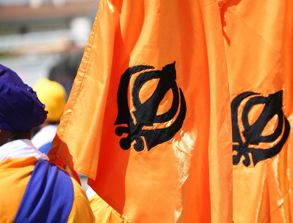Let Me Say it Now by Rakesh Maria Westland. Pages 624. Rs899
Book Title: Let Me Say it Now
Author: Rakesh Maria
Vikash Narain Rai
Former Mumbai Police Commissioner Rakesh Maria’s Let Me Say It Now is a kaleidoscopic version of his memories of tracking and solving crime from three-and-a-half decades spent in the Indian Police Service. The scintillating self-account of an aggressive pursuer of crime/criminals during his long association with the Mumbai Police, the best police outfit east of Suez, as he would call it, is surprisingly replete with a defensive and explanatory overtone.
Coming from a close-knit, middle-class Bandra family — father having close Bollywood links, mother being a disciplinarian housewife, and Maria himself an excellent student, keen sportsman and film enthusiast — it is no surprise that the memoir underlines the family, books, sports and film ties as major points of reference. There is a nostalgic celluloid ending, reminiscent of a classic film’s last show in a vintage cinema hall amidst an emotionally faithful audience.
Maria emerges as a master scriptwriter, confirming that his passion for a career in police service was a loss to the film world. He has penned an extremely gripping account of the underworld rivalries and terror wars, sensational crimes and communal flare-ups, world of informers and witnesses, volatile bandobasts and mundane routines, interspersed with profound sacrifices of police operatives and petty intra/inter departmental rivalries, culminating, however, almost always, into a triumph for his professionalism. The book features awe-inspiring incidents likes the Mumbai blasts, the 26/11 carnage, and intriguing tales such as the Sheena Bora murder case, which put even his own integrity at stake.
Has the ace investigator done justice to the title of his book? Only partially, notwithstanding his craft of presenting ‘an unusually frank and penetrating look into the criminal justice system and the socio-political set-up it operates in’. Simply put, the silence on certain compelling aspects would appear confounding to the detractors. The secular features of the crime world are brought out well, but Maria’s chronology of the ISI-centric pan-India terror cases, spanning the 1990s and the first decade of the present century, remains clueless about the bhagwa linkages.
The author, at times, appears too busy defining the system’s overstretched surface and too distracted by the routine details to go deeper into their genesis. When it comes to corruption and complicity plaguing the policing system, or the political apathy, he is not just too gentle but evading as well.
The brilliant writer that Maria is, he said it whenever he felt free to bare all. For example, the decadence of working class leadership, the competitive trade union rivalries portrayed in the context of the murder of Left-wing labour leader Datta Samant and the emergence of Shiv Sena meddling with their parochial might, criminal manipulation and greed, leading to the patronisation of dons like Naiks and Gawalis, integral to business community as well, have been summed up by Maria like a keen social researcher. The following excerpt underlines it: ‘Sunit Khatau murder case brought me close to the saga of the breakdown of the old community in Girangaon. It gave me a better understanding of a bygone era, throwing light on the plight of the rudderless working-class youth from the village of Mills — how they felt prey to dangerous temptations and easy money in this ‘Maya Nagri’ (City of Illusions) called Bombay.’
While assiduously building up the image of a family man and team man, Maria has managed to scale many a peak of harmonious existence. None could have been steeper than the one he chose to uncover on the day of his retirement: ‘When a cop retires, his entire family retires from the service which they have joined without their knowledge.’ In tune with professionalism, Maria regrets, in the same breath, his failure in working out a couple of murder cases, including that of Narendra Dabholkar, the renowned rationalist. Throughout the book, Maria is fabulously generous in sharing the limelight with a carefully preserved long list of junior colleagues, key to his style of leadership.
They say limelight follows a showman. Maria has used his vantage positioning in the police control room on November 26, 2008, and being privy to the real-time communication among policemen, and the terrorists and their Pakistani handlers, and subsequent interrogation of Kasab, to devote as many as 140 pages to the ‘war’ on Mumbai. Taking readers through the deeds of familiar heroes and villains in flesh and blood, it is not just a compelling account of the ISI-sponsored ruthless attack engineered via sea route for the first time, but a 360 degree insight into the intricate pantheon of operational nut-bolts. The reader will be glued to the text, a virtual cul-de-sac, the kind of which has probably never been penned before by a member of the Indian Police Service.














